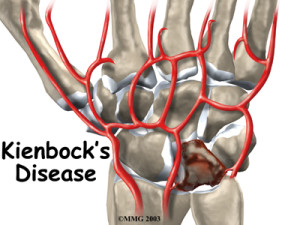Have you ever heard of snapping scapula syndrome? If you answered no, I would not be too surprised. Whilst this condition is more common than you may think, it seems to be underappreciated within the physiotherapy. Thus, this article will discuss snapping scapula syndrome including what it is, why it occurs and what you need to do to fix it!
Ankle sprains are very common in the practice of sports physiotherapy. However, unfortunately many patients go on to have long term problems. This has lead to the development of many proposed treatments and rehabilitation programs. This article will discuss new research into the use of manual therapy techniques combined with exercises for the rehabilitation of inversion ankle sprains.
Aerobic exercise, particularly in the form of running, has become more popular with the general population over the last few decades. Unfortunately, this increase in healthy exercise may come at a cost with up to 80% of runners reporting a lower limb injury. These trends mean that preventing running injuries is gaining significant importance in the world of sports medicine. One touted intervention that is currently in vogue is adapting the runner’s biomechanics to a forefoot strike pattern or barefoot running technique…
How regularly do you treat injured athletes with reduced lower limb flexibility? The answer from many of you would likely be all day long! It has been well established that athletes with reduced lower limb flexibility are at greater risk of injury (Murphy et al., 2003). Thus, it would be logical that a program of regular stretching, which has been shown to improve lower limb flexibility (Harvey et al., 2002), would reduce this injury risk… wouldn’t it? Well, not conclusively…
Introduction The condition discussed in this article, you will come to find, is quite complex and can be a battle for the physiotherapist and physical therapist. Thoracic outlet syndrome is considered to be a collection of quite diverse syndromes rather than a single entity (Yanaka et al., 2004), and therefore, accurate diagnosis and enlightened treatment […]
Lateral epicondylalgia (tennis elbow) is a condition that I, and am sure many other physiotherapists out there, treat very commonly. Interestingly, despite the frequency with which healthcare is sought for this condition; only recently has our understanding of the pathophysiology of lateral elbow overuse injury improved. Consequently, the treatment approaches for lateral epicondylalgia vary widely and lack definitive evidence. Therefore, this article will discuss the evidence based assessment and management of lateral epicondylalgia (tennis elbow)…
It is no secret that sports physiotherapists and physical therapists across the world commonly assess and treat knee injuries. Of these injuries, patellofemoral pain is exceptionally common, accounting for 25% of all sports related knee injuries (Fredericson & Yoon, 2006). In fact, patellofemoral pain syndrome is the most commonly reported injury sustained by runners (Taunton et al., 2002). As many of the aetiological factors that contribute to patellofemoral pain syndrome have not been clearly identified, decision making regarding appropriate rehabilitation and treatment can often be challenging. This article will discuss the use of isometric adduction during closed kinetic chain lower limb exercises to facilitate vastus medialis obliquus (VMO) activation.
If you work with athletes who train hard, as many sports physiotherapists do, then you will have encountered exercise induced muscle damage or delayed onset muscle soreness (DOMS). It is also likely that the suffering athlete has come to you and said “I’m so sore from that workout – can you do anything?”. There are many widely used post workout and recovery strategies that are touted as effective at enhancing an athletes recovery from high intensity exercise. However, as is frequently the norm in sports medicine, the evidence for their use is mostly anecdotal rather than based on high quality clinical trials. Fortunately, a new review recently published discusses the effectiveness of physiotherapeutic interventions following high intensity exercise.
Kienbock’s Disease is a rare and infrequently discussed source of wrist pain that you could definitely encounter in your clinical practice. The condition is named after the Viennese radiologist Robert Kienbock who presented his findings on the disorder in his 1910 publication ‘Concerning traumatic malacia of the lunate and its consequences’. This condition, discussed in depth below, primarily affects people between 15 and 40 years old and has been documented in athletes from many sports that include repetitive use of the wrist e.g. golf, tennis, martial arts, etc . Therefore, if you work with athletes from these sports, you should remain on high alert for the occurrence of Kienbock’s disease.
As sports physiotherapists we treat all sorts of patients that want to do crazy things. You know… run, swim and ride all day and even climb mountains and cliffs. Many of these athletes are young and physically active, and they strive to push their body to its physical limits. A well recognised condition to affect this group of people is chronic exertional compartment syndrome (CECS). In fact, eighty-seven percent of patients with CECS participate in sports, and runners account for 69% of these cases Thus, sports physiotherapists, particularly those that deal with endurance sports, will assess and treat this condition with considerable frequency. This article discusses new research on changing biomechanics to manage CECS.
In the past this site has featured some lighter, colloquial blog posts. These articles discuss issues related to the greater physiotherapy community. Thus, I present a few mantras I have heard, adapted or made up for the physios to live by in the coming year.
Radial tunnel syndrome is rare, it is challenging to differentially diagnose and can be a monster to manage. If you have a recalcitrant case of tennis elbow then this post will interest you! This article discusses the best available evidence for assessment and management of radial tunnel syndrome.








